you can imagine how overwhelming it can be visiting one of many art or local markets anywhere in Indonesia. Beautiful textiles of any colour and technique can be found on every corner. Price can range anything from $2 to $200 depending on materials and if it was handmade and how well can you bargain. In Indonesia probably each of many islands has their own style of weaving. Each style is unique, but can be also extensively similar.
I got intrigued by this fact and so I decided to find out bit more about weaving techniques in Bali. For that I visited community in Seraya (North East Bali coast) producing textiles in their traditional way using only natural dyes.
This community was started by organization called Threads of Life (based in Ubud) promoting conservation of this traditional craft, fair work conditions and pay. They have found experienced women in the area who still produced textiles in traditional way and got them to teach younger who could carry it further. Today, there are 100 people of all ages working in the community. Men, women and kids work here between their other commitments such as farming and school (kids). This program not only secures survival of the craft, but also helps locals to generate extra income.
Incredible detailed textiles take up to several months to complete depending on the pattern and material. Traditionally, in Bali, it was mostly cotton used for weaving. However, also banana and other fibres are used. Before one gets to weave the thread needs to be made and dyed and that is also very lengthy process.
1. Cotton bolls needs to be harvested
2. Cotton bolls needs to be cleaned from stones and other impurities caught in the fibre. Sort of wooden mill is used for that.
3. Cotton is placed on sort of bow and vibrated to transform it into nice and light fiber.
4. The cotton fiber is rolled with wooden stick into longish shape reminding me cigar except white…..
5. The cotton stick is transformed into thread
6. The yarn of thread is boiled in water for one day
7. The washed yarn is boiled in a dye for a day or more
8. colour is fixed in vinegar for 1-2 hours then rinsed in water and dried
9. The dyed dried yarn is span onto a spool
10. The spool is used for weaving
There are lots of similarities in this weaving technique to those I used to observe done by my grandmother when I was a child. The weaving device is little bit different but principle is the same.
What I got fascinated by though was a production of the natural dyes. All colours are available from nature and it is interesting to learn which plants can be used for what. In this community they used following ingredients, but in other places you can find different plants to be used.
Blue – indigo plant leaves
Red – root of morinda mixed with limestone (red colour requires to dry for two weeks before it is submerged into vinegar for fixing)
Yellow – skin from pomegrande
Black – rust (rusty metal is submerged in a water for up to one year and then used as black dye). Apparently coconut fibre can also be used for black.
Brown – shidawaya flower
Pink – sichang wood
Cream – beetle nut
Green – blue and yellow mixed together
This was just a brief insight into craft with very long tradition.


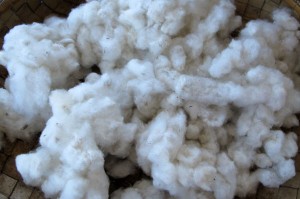
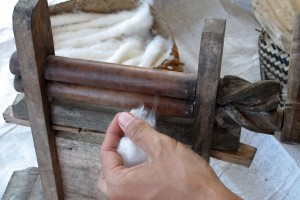
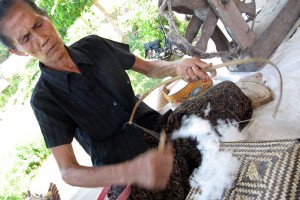
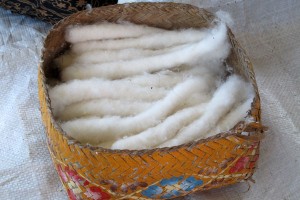
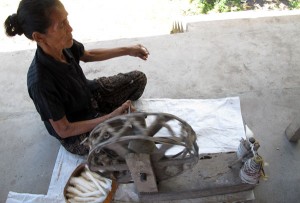
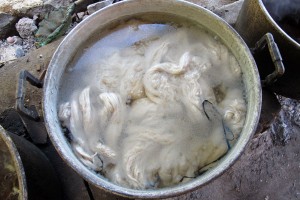
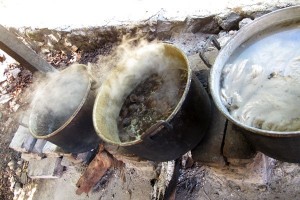
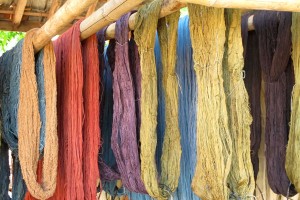
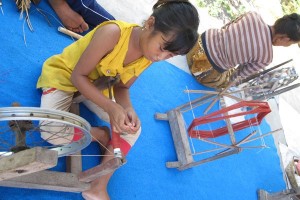
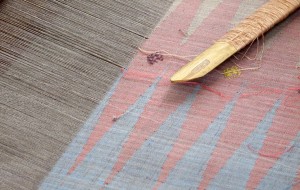
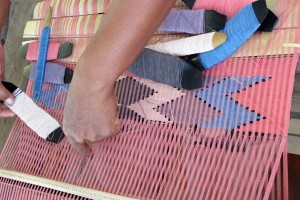
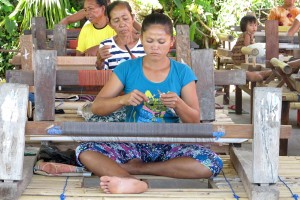
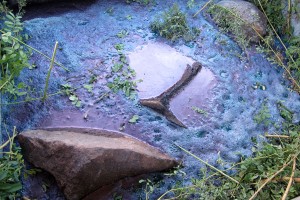
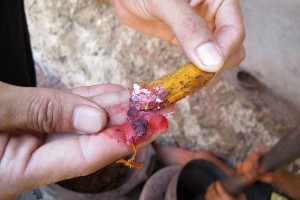
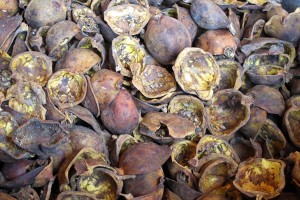
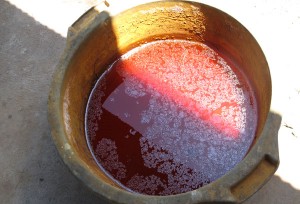
{ 2 comments… read them below or add one }
Loved the pictures & explanation !
Hola Radka! Was cool to read about all the colors they get from environment. I always thought rust would make for a good red/brown dye (as evidenced via permanent stains on my white shirts! hehe)
-Andrius